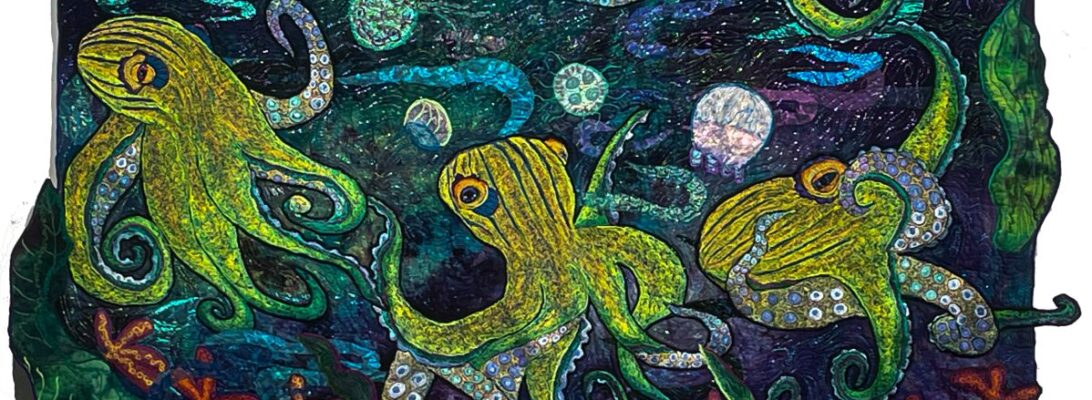
I’ve always joked that it didn’t matter that I couldn’t do straight lines because I really didn’t want to. I tend to justify my limits a bit. I do know better.
I left behind piecing when I was a beginning quilter, because I was much more interested in quilting in creatures than following straight lines. I was also rotten at straight lines. We are defined not so much by what we take up as by what we discard.
So after years of beautiful curves and free motion ecstacies, I find myself if situations where I really do want to make a straight line. At least sometimes.
It all started with a ceiling tile. I have a ceiling tile that rubs out like prairie grass. I love it. It gives the movement of grass without a heavy shape. But the lines are basically straight.

I’ve stitched them with just my darning foot, to mixed results. I couldn’t follow the lines as well as I liked. They’re pretty, and I love the grass stems, but I wanted them to be less sloppy.
I was browsing through some videos where I found one of Leah Day using a ruler and a darning foot together. I’m quite a fan of hers. She has done a lot of good innovation with stippling and texture. She showed how to quilt with a darning foot and a ruler.
I know it’s a long-arm quilter thing, but I had never tried it. There was a special foot involved and some very pricey rulers, so I decided to try to do it on the cheap.
Berninas aren’t either really short or long shank machines. They’re a whole other system. But I do have an adapter for feet that works pretty well. I ended up ordering a short shank darning foot and a five inch omnigrid square.
The foot with the adapter was an epic fail. I could put the foot on the adapter, but it wouldn’t make a proper stitch without breaking needles.

I went through my old Bernina feet and found one that came with a really old machine. It was a darning foot with a raised lip. It worked. Clearly there’s a learning curve.
Would it have been easier to buy a new foot? I’m sure. But it was also pricey, Next time the ship comes in, I’ll buy one.
Will I do this more? There are times when a straight line is just what you need. Probably no way out.

So we have a win for old weird Bernina feet and ingenuity. I’m always pleased with new possibilities. It’s like someone slipped a new toy in my tool box. My reeds are everything I could ask for. They’re almost straight.






















































































